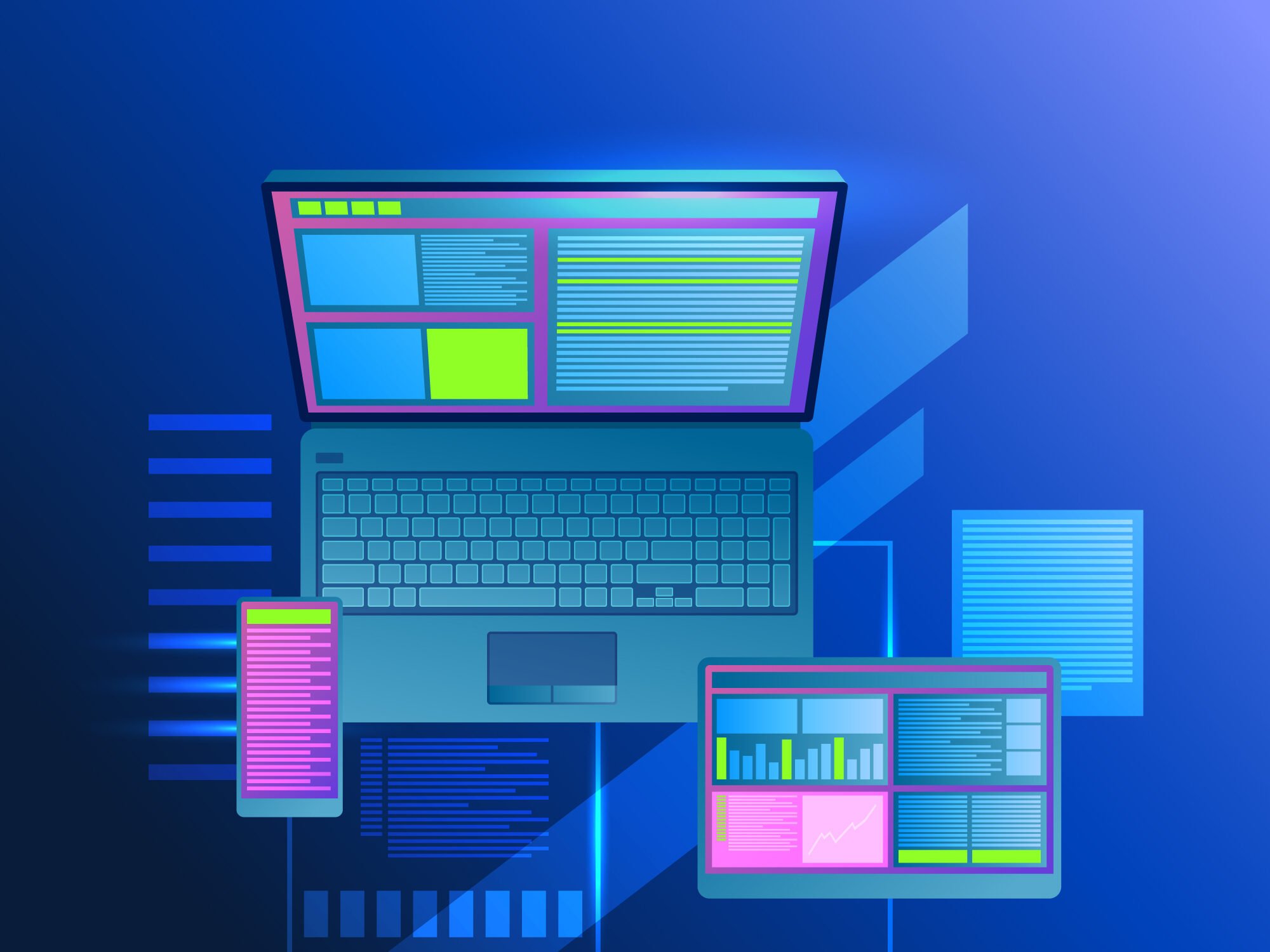Introduction
Computer Information Systems (CIS) is an exciting and ever-changing field that straddles the line between technology and business. It involves the study and use of computer systems to solve business problems, simplify operations, and improve decision making. Understanding CIS in today’s technological society has become a necessity for companies that want to remain competitive.
Thank you for reading this post, don't forget to subscribe!Components of Computer Information Systems
Hardware
Hardware refers to all the tangible devices and components that form part of a computer system. These include:
- Computers: They incorporate both desktops as well as laptops on which users directly interact with.
- Servers: These are powerful processors used for data retention, applications hosting and managing network resources.
- Storage Devices: Hard drives, solid state drives (SSDs), external storage units where data and information are stored.
- Networking Equipment: Therefore, Routers, switches, modems joining various sections of networks. Hardware acts as the backbone in any computer information system by providing necessary infrastructure needed for processing and storing data.
Software
Software programs and computer applications that perform various activities on hardware are called software. These include:

- Operating Systems: Software that links the user with the computer or other devices in it (e.g., Windows, macOS, Linux).
- Application Software: Programs like word processors, spreadsheets and database management systems.
- Enterprise Software: In other words, application designed for a group of users such as ERP (enterprise resource planning) and CRM (customer relationship management) systems. Therefore, role of software is crucial in converting raw data into useful information as well as facilitating diverse business processes.
Data
The main part of any information system is the data which is a collection of raw facts and figures that can be processed to generate information. Kinds of data comprise:
- Transactional Data: This is created from business transactions such as sales and purchases.
- Master Data: It involves foundational data about principal business objects including customers, products, employees among others.
- Metadata: Information that describes how data can be organized and managed. Similarly, Good data governance ensures that the data remains accurate, relevant and easily accessible by authorized parties thus facilitating decision making process.
Processes
What are Processes? These are procedures and regulations that run information systems:
- Data Collection: This is the process of obtaining raw data from different sources.
- Data Processing: The methods through which raw data is manipulated into meaningful information through sorting, filtration, and analyzing.
- Data Storage and Retrieval: A way of keeping data safe and getting it out of storage when it is needed.
- Data Distribution: How to give information to the right receivers. Efficient processes help in ensuring smooth running of information systems for organizational goals achievement.
Roles and Responsibilities in Computer Information Systems
Systems Analyst
Who are Systems Analysts? The main link between business needs and technology solutions is performed by this person. This includes their tasks:
- Analyzing Requirements: Similarly, Working with stakeholders closely to understand what business wants before developing technical specifications.
- Designing Systems: Coming up with blueprints or outlines for new systems or changes in old ones meant to ensure efficiency and effectiveness respectively.
- Testing and Implementation: Ascertaining that the system runs as planned before putting into use.
- Training and Support: Giving training sessions to those who will be using it as well as maintaining a good working environment.
Database Administrator
A Database Administrator (DBA) handles organization databases to make sure that the data remains available, intact and safe. Such duties encompass:
- Database Design: Creating and establishing databases that fit business needs and performance requirements.
- Data Security: Controlling user access, encrypting sensitive information, and creating secure backup systems.
- Performance Monitoring: Tuning database performance by optimizing queries and data structures.
- Backup and Recovery: Developing recovery plans for system failure or disaster situations in order to ensure data availability.

IT Manager
An IT Manager supervises the technology infrastructure of an organization ensuring it is directed towards achieving goals. The responsibilities include:
- Strategic Planning: Formulating IT strategies which underpin organizational objectives & growth
- Budget Management: Efficiently managing IT resources & budgets for maximum ROI
- Team Leadership: Responsible for leading IT teams including recruitment, training & performance management
- Vendor Management: Assessing technology providers & maintaining relationships to ensure service levels are delivered at cost.
Software Developer
The development of software includes designing, coding, testing and maintaining applications that meet user requirements. Their duties are to:
- Programming: Writing code using different programming languages to build applications satisfying end users.
- Testing and Debugging: Carrying out tests and debugging programs for ensuring proper functionality and quality assurance.
- Collaboration: Engaging closely with other developers, designers, stakeholders to assure smooth integration and user satisfaction.
- Continuous Improvement: Modifying software applications on the basis of customer feedbacks, technological updates or changed business situations
Applications of Computer Information Systems
Data Management and Analysis: Computer Information Systems
Data Management and Analysis refers to the systematic organization, storage and manipulation of data in order to reveal meaningful information. They include:
- Data Storage: The security ensuring storage of data using databases as well as data warehouses.
- Data Integration: Bringing together multiple sources of data into a single view for analysis purposes.
- Data Analysis: Making use of statistical analysis techniques like data mining as well as machine learning methods for discovering patterns, trends or correlations.
- Decision Support: Supplying decision-makers with actionable insights through analyzing data so as to support strategic plus operational decisions.
Automation of Processes: Computer Information Systems
Using computer systems to streamline and optimize routine tasks and workflows is what Automation of Processes is about. In connection with the above, some applications are as follows:
- Automation of Workflows: These may entail activities like typing in data repeatedly, working with documents and data digitizing, managing stock.
- Business Process Management (BPM): This aids in controlling business processes so they can be made more efficient while minimizing expenditure.
- Robotic Process Automation (RPA): Use of software robots which help automate tasks that are rules-based at the expense of human resources.
- IoT Integration: Automation of processes using information from various devices connected within the IoT (Internet of Things) framework.
Improved Communication: Computer Information Systems
Improved Communication involves enhancing internal and external communication within organizations using CIS tools. Applications include:
- Email and Messaging: This addresses generation of real time communication and collaboration through email, instant messaging, and group chat platforms.
- Video Conferencing: Meetings are done over the Internet with participants in different locations.
- Collaborative Tools: Sharing documents over the cloud, managing projects, and working as a team
- Unified Communications: Integration of all types of communications into one platform that allows for easy interaction among people.

Cybersecurity: Computer Information Systems
Cybersecurity focuses on protecting computer systems, networks, and data from cyber threats and unauthorized access. Applications include:
- Network Security: Network infrastructure is secured by using firewalls, intrusion detection systems (IDS), virtual private networks (VPNs) etc.
- Endpoint Security: Protection against malware for individual devices such as computers or smartphones
- Data Encryption: Confidentiality can be maintained by encrypting sensitive data with this technology.
- Incident Response: The entire process required to identify an incident till the final recovery
Challenges in Implementing CIS
Security Issues
Reasons for which security remains a big issue in the implementation of computer information systems (CIS) include:
- Cyber Threats: Malware, phishing attacks and ransomware are among many risks that constantly threaten data integrity and security.
- Data Leakage: Unauthorized access to sensitive information can lead to financial loss, legal trouble, and reputation impairment.
- Compliance Requirements: Compliance with industry regulations and standards on data protection makes security more complex.
High Costs
Costs related to implementing and maintaining computer information systems have been found to be significant including:
- Infrastructure Costs: Expenditure in hardware, software licenses and networking equipment.
- Implementation Costs: Cost associated with designing, developing, installing system software.
- Operational Costs: The costs of maintaining the system including such areas as upgrades, support etc.
- Training & Skills Development– Budgeting for training programs aimed at ensuring that the workforce is able to effectively use and manage new CIS technologies.

Training and Development
Computer Information Systems must be able to utilize CIS effectively for any organization through:
- Technical Expertise: Understanding complicated systems, software applications and network configurations
- Problem Solving Abilities: Troubleshooting problems and maximizing system performance
Adaptability-Thus the need of keeping up with technological advancements so they don’t get left behind.
Keeping Up with Technological Changes
The rapid pace of technological advancement presents challenges such as:
- Obsolescence: Technologies becoming outdated or unsupported, requiring timely upgrades or replacements.
- Integration Complexity: Integrating new systems with existing infrastructure and legacy applications.
- Emerging Technologies: Adoption and integration of technologies such as artificial intelligence (AI), machine learning, and cloud computing require strategic planning and investment.
- Skills Shortages: Difficulty in finding qualified professionals with expertise in emerging technologies and specialized CIS roles.
Conclusion:
To sum up, computer information systems (CIS) play a fundamental role in the modern business world through incorporating technology into organizational processes for increased effectiveness, support of decision-making, and enhancement of innovation.
From managing data and automating workflows to improving communication and safeguarding digital assets through cybersecurity measures, CIS empower businesses to adapt and thrive in a digital landscape.
Therefore, organizations should embrace CIS so as to remain competitive, agile as well as make it possible for them to take advantage of technological advancements for meeting ever changing market demands. And now with advancing techs coming up they still hold the same level of importance in shaping future businesses across sectors.
Read More: Computer Information Systems



Comments are closed